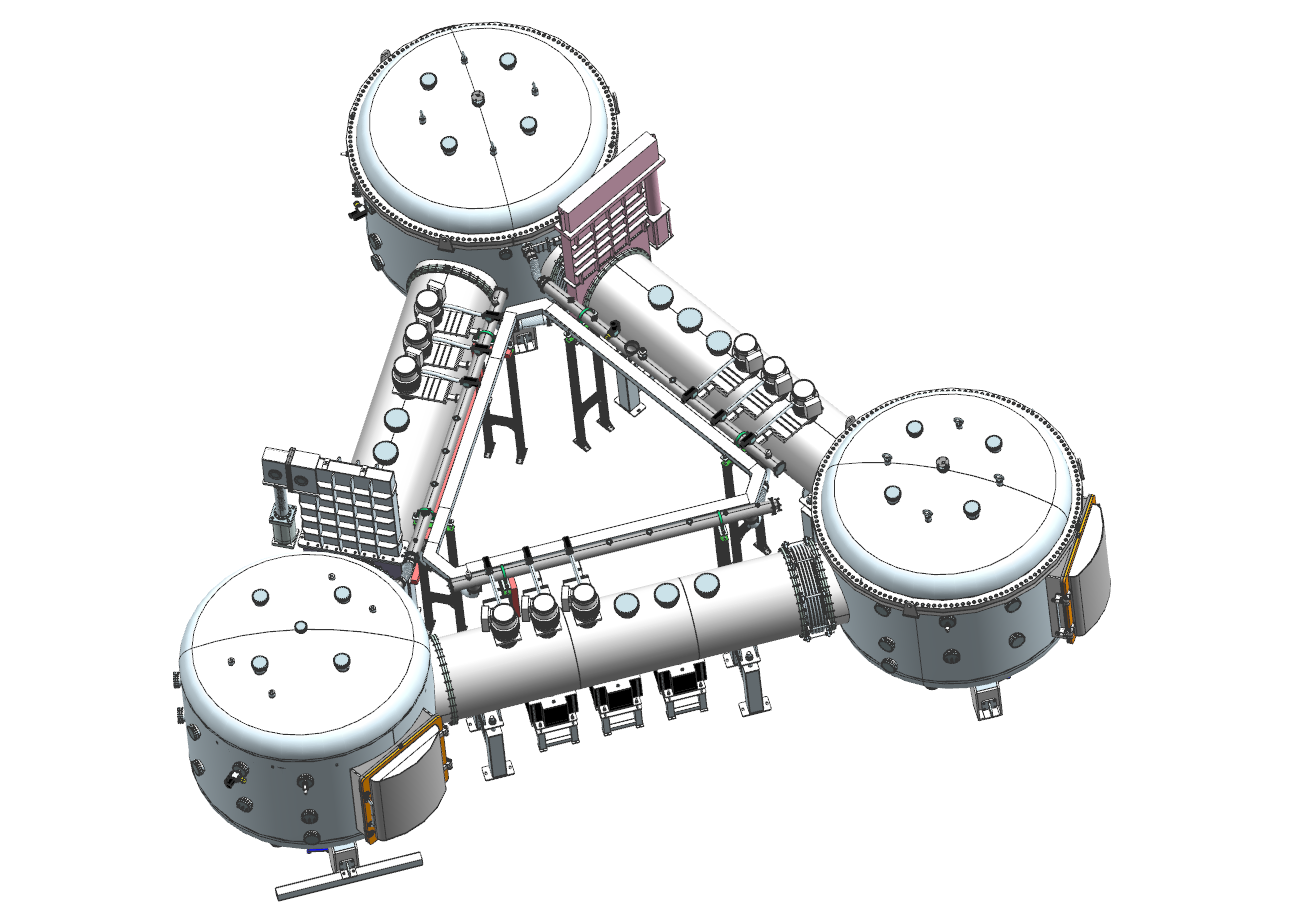

The picometer precision laser interference platform, undertaken by the Institute of Mechanics, Chinese Academy of Sciences, is part of the first batch of cross-research platforms “Advanced Transportation and Measurement Technology” in Huairou Science City. The first stage of the project was completed at the end of March 2019, including the primary vibration isolation system, the hundred level purification room, and the large vacuum system. The performance of the primary vibration isolation system is superior to that of VC-F, providing high-performance isolation conditions for the laser interference platform. The hundred level purification room has achieved static 100 level cleanliness, ensuring the operating conditions of the picometer precision laser interference platform. The effective arm length of the large vacuum system can reach 10 meters, which provides a low vibration, clean, and high vacuum working environment and meets the requirements of the laser interference experimental platform.
The picometer precision laser interference platform is constructed as the technology preparation for the Chinese space-based gravitational wave detection program. The program consists of three steps: the first step is to launch a single satellite to verify some key technology in one optical bench; the second step is to launch the dual satellites, in which more than 95% of the key technologies of the space gravitational wave detection plan will be tested in orbit; the final step is to launch the three satellites and conduct comprehensive scientific experiments for gravitational wave detection in 2033.
Based on the preliminary preparation and development, the picometer precision laser interference platform can be used to provide a ground testing environment for other space science satellite missions in China, such as the next generation earth gravity satellite, space quantum experiment satellite, and space basic physics satellite